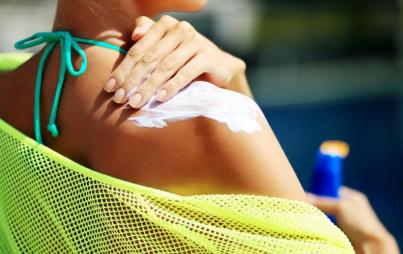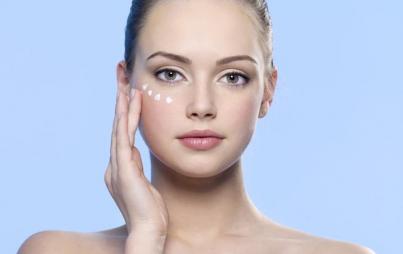
It’s summertime, and even if you’re an indoor person, odds are you’ll be spending a good amount of time in the sun in the coming weeks. Like many women, you probably know you should put on sunscreen at least 20 minutes before you catch those rays, but how do you know which product to choose, or whether you’re getting decent UV protection? We’re here to help you sort through the fact, fiction, and marketing jargon behind your summer sunblock.
1. What exactly is SPF?
SPF, or sun protection factor, measures the length of time a product protects you from UVB rays before you begin to burn. Let’s say it typically takes you 20 minutes of sun exposure before you turn red. Applying a product with an SPF rating of 15 should, theoretically, allow you to stay in the sun 15 times longer — or 5 hours — before you begin looking like a boiled lobster. A sunscreen with an SPF of 30 should give you a mighty 10 hours of protection (but good luck finding 10 consecutive hours of direct sunlight!), while at SPF 50, you should be able to withstand over 16 hours — an amount of sun exposure downright improbable here on planet Earth.
The problem with all sunscreens, regardless of SPF rating, is that they begin to break down as soon as they’re exposed to UV rays. According to the FDA, you should reapply sunscreen every two hours, no matter the SPF rating, to counteract the breakdown of active ingredients. But if you’re sweating (as most humans tend to do in the sun), you should reapply every hour. In short, you can’t rely on any product to give you more than a brief period of benefit.
2. Do high-SPF sunscreens give better protection?
A product rated SPF 15 filters out about 93% of harmful UVB rays, while SPF 30 increases that protection to around 97%. The "better protection" is marginal and likely not needed. The protective benefits drop off after that—SPF 50 only increases the amount of UV filtration to 98%. In most cases, an SPF of 30 is as much protection as you need.
But you can’t just grab any old SPF 30 sunscreen off the shelf and assume you’re set — many sunscreens don’t actually offer the protection claimed on their labeling. In a 2015 Consumer Reports test, nearly a third of products failed to provide the level of SPF on their labels, providing anywhere from 16-70% less SPF than manufacturers claimed. If you want to be sure your product lives up to its labeling, it’s worth picking a product on Consumer Reports’ list of recommended sunscreens.
3. What's the deal with UVA protection?
SPF ratings apply only to UVB rays, but UVA rays are no friends to your skin either — not only do they cause skin damage that leads to visible aging, but recent studies also suggest that UVA rays may have a cancer-causing role, too.
Unfortunately, there’s no standard measure to tell consumers how much UVA protection they’re getting from a product — the term “broad spectrum” is more a marketing term than it is an informative one, as it doesn’t tell you how well your product’s UVA protection stacks up against its SPF rating.
So what’s the savvy sunscreen buyer to do? Read the ingredients. Physical UV filters (often called sunblocks) work by reflecting sunlight away from the skin, and provide UVA and UVB protection. If your product contains a good percentage of the sun-blocking agents titanium dioxide or zinc oxide, you’re most likely getting truly broad coverage. Chemical UV filters (referred to as sunscreens) create a film on the skin that absorbs UV rays. When it comes to chemical agents, look for avobenzone, which gives good UVA protection. Other good ingredients include oxybenzone, which provides both UVA and UVB coverage.
4. Does sunscreen actually cause skin cancer?
In a word, no. Several years ago, Environmental Working Group raised a ruckus when it claimed that wearing sunscreen containing retinyl palmitate, a retinoid, could accelerate rather than prevent the growth of skin cancer. But according to the Skin Cancer Foundation, there’s no cause for alarm. The research that spurred the controversy was an unpublished, unapproved, unreviewed study — well over 10 years old — that didn’t consider any human subjects.
Beyond the fact that there’s not a shred of published data to suggest that retinyl palmitate promotes cancer, our friends at the Skin Cancer Foundation point out that dermatologists frequently prescribe retinoids to help decrease cancer risk, so slather it on.
5. Is last year’s bottle of sunscreen still good?
Nope, chuck it. Even if your sunscreen didn’t come with an expiration date printed on the package, most sun care products break down over time — especially if they’ve been exposed to heat in your beach bag or in the glove compartment of your car — and that means you might not be getting their full benefits. Worse still, germs can proliferate in those old, partially-used tubes and containers, and nobody wants to be smearing on the bacteria. When it doubt, spring for a fresh bottle.






